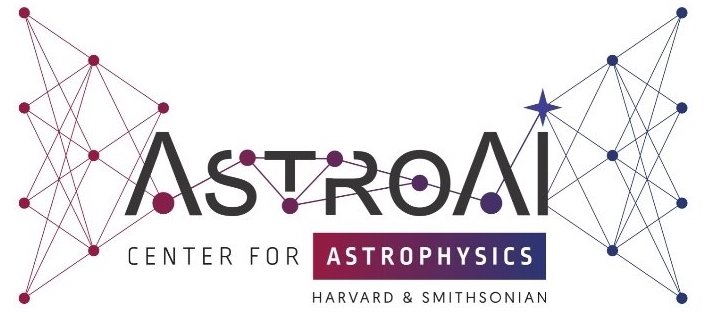AstroAI Lunch Talks - November 18, 2024 - David Fouhey & Eirini Angeloudi
18 Nov 2024 - Joshua Wing
The video can be found here: https://www.youtube.com/watch?v=NwQbx8fACjg
Speaker 1: David Fouhey (NYU)
Title: Adventures in Using Computer Vision for Solar Physics
Abstract: I will show techniques that my research group and collaborators have built over the past four years that apply machine learning to problems for solar physics. One focus has been building new tools for obtaining magnetograms of the Sun’s photosphere. These magnetograms serve as a cornerstone for many applications and are traditionally produced by optimization-based Stokes inversion, which inverts a process describing how magnetized plasma produces polarized light. We have developed and tested a series of deep-learning based approaches for magnetogram generation. These approaches are fast and can solve new challenges, such as generating the magnetograms of one instrument from the Stokes observations of another instrument (e.g., creating Hinode/SOT-SP-like data with SDO/HMI) or producing vector data from line-of-sight instruments. By being informed by the underlying problem and downstream uses, the approaches work better than off-the-shelf machine learning methods and have tested far more for systematics compared to most machine learning systems.
Speaker 2: Eirini Angeloudi (IAC)
Title: A framework for robust SBI to infer the merging history of nearby galaxies
Abstract: Over the past decades, cosmological simulations have become indispensable for advancing our understanding of galaxy formation and evolution, particularly when combined with the power of machine learning. Yet a significant challenge remains: applying ML models trained on simulations to real observational data is not straightforward due to inherent biases and lack of realism in simulations. In this work, we aim to create a robust framework for simulation-based inference to bridge this gap, enabling us to extract novel information about the merging history of galaxies from real-world surveys. While we know that mergers heavily influence galaxy evolution, quantifying their contribution to a galaxy’s stellar mass is challenging, and the cumulative effect of mergers across cosmic time is even harder to infer from observations. Here, we present the first theoretically-motivated constraints on ex-situ vs. in-situ stellar mass for ∼ 10,000 nearby galaxies from the MaNGA survey, both in integrated and 2D spatially resolved formats. Experimenting with a variety of ML architectures (e.g., CNNs, normalizing flows, VAEs, diffusion models) and employing mock datasets from multiple cosmological simulations for training sets, we attempt to mitigate biases in our predictions while providing calibrated measures of uncertainty. This systematic approach offers a unique perspective on the merging history of nearby galaxies, enriching our understanding of galaxy evolution while demonstrating how simulation-based inference can be employed to extract new, non-trivial hidden information from data.
